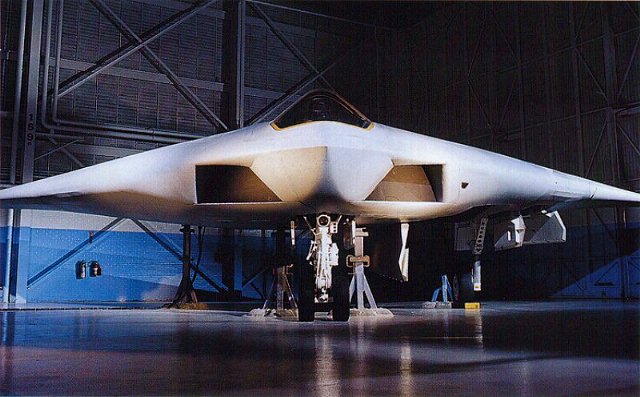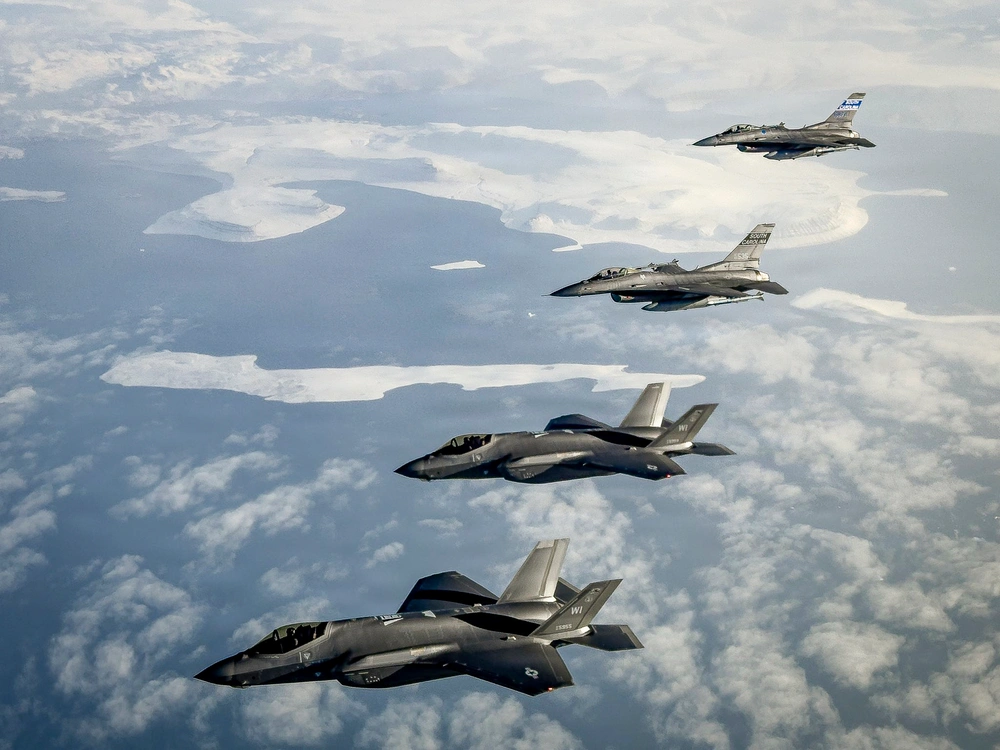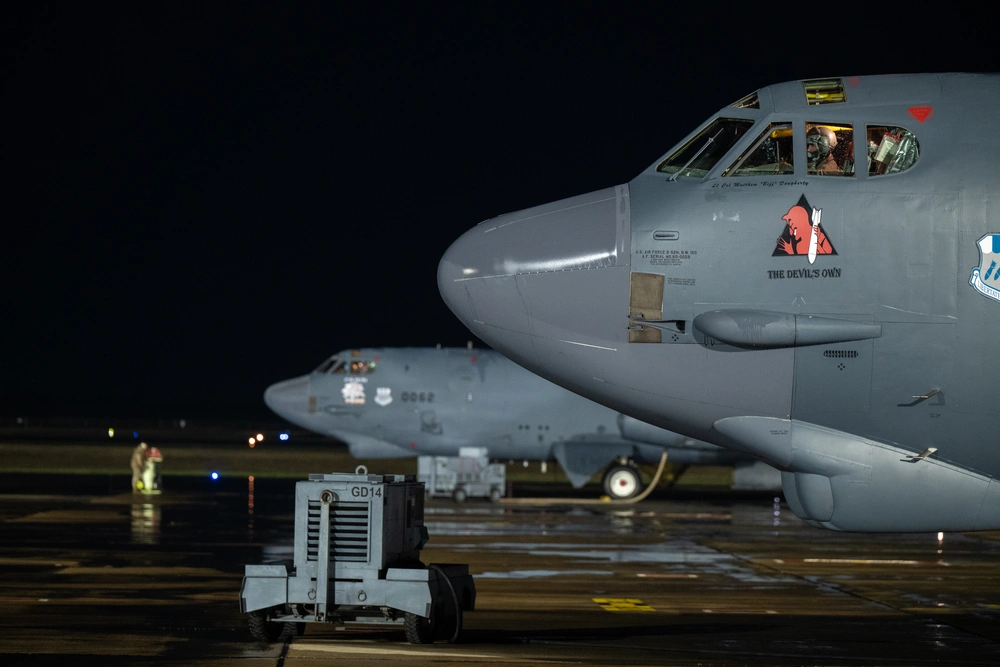In June of this year, the Air National Guard’s 142nd Wing in Portland, Oregon received America’s first operational F-15EX Eagle II – a revamped iteration of the legendary air superiority fighter intended to replace the nation’s aging fleet of F-15C and D fighters. These non-stealthy but highly capable fighters will be tasked with assuming the homeland defense role, but both Boeing and the Air Force are already looking at the possibility of expanding the responsibilities of these broadly capable fighters for decidedly more offensive operations.
With development on America’s next air superiority fighter, being developed under the name Next Generation Air Dominance or NGAD, now on hold, the Air Force is developing strategies aimed at ensuring the United States maintains its dominant edge in the sky even if its new high-end fighter takes years to manifest. New investments into the F-22 Raptor fleet, made up of just 150 or so combat-coded jets, aim to ensure they remain the most dominant air superiority fighters on the planet through the 2030s, and the forthcoming Block 4 F-35 promises to be perhaps the most broadly capable jet on the planet by the time it enters service. But war games played out both within the Defense Department and by a variety of external think tanks all point toward the reality that these fighter fleets would not be enough to overwhelm Chinese defenses on their own in the event of open war in the Pacific.
It has become clear that in order to deter such a conflict, or barring that win it, the United States will need a large volume of airframes delivering an ever larger volume of ordnance into the fight, and while the F-15EX lacks the stealth necessary to be considered survivable in hotly contested airspace, many of the jobs this approach to warfare might require don’t rely on stealth at all.
And in fact, the Eagle II may be perfectly suited for them.
The F-15EX as a drone coordinator
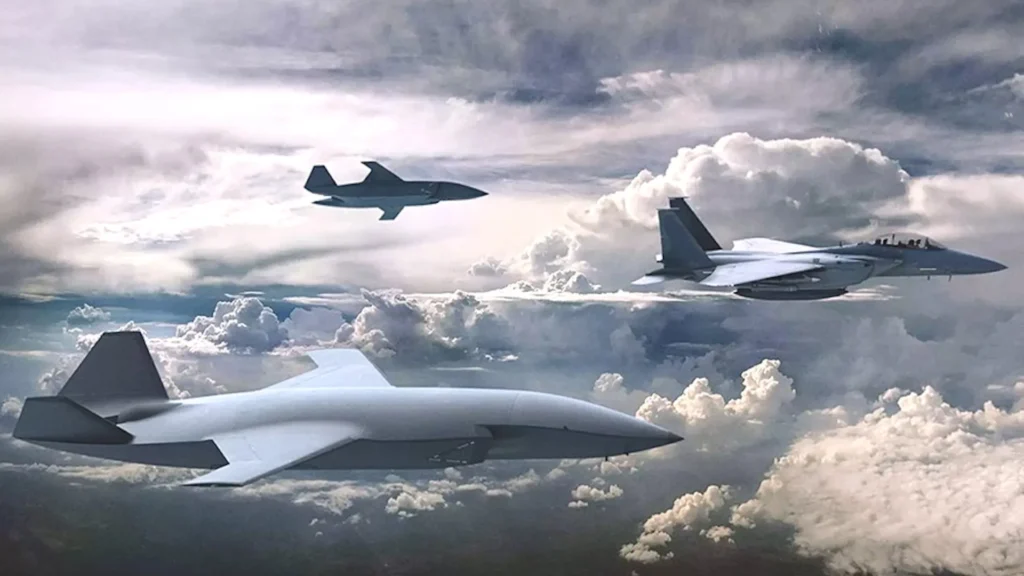
Despite being a two-seat aircraft, the F-15EX is designed to fly and fight with full functionality with just the pilot onboard, even in complex multi-role operations. This was done, in no small part, to ensure Eagle IIs can seamlessly replace single-seat F-15Cs in the homeland defense role, and a great deal of operational testing has been done with only a single crewmember onboard for that very reason. But that seemingly unnecessary backseat provides several significant advantages, ranging from flying with a traditional Weapons Systems Officer (WSO) onboard as one might in an F-15E Strike Eagle to more forward-leaning concepts like that of a drone coordinator for the Air Force’s forthcoming Collaborative Combat Aircraft, or CCAs.
“In all the conversations with the customers, the one thing I get the most is the excitement that there’s a second seat to do something,” said Rob Novotny, director of business development for Boeing’s fighter jets.
Earlier this year, the U.S. Air Force awarded contracts to continue development on the first increments of these air-to-air focused UCAVs (unmanned combat aerial vehicles) to Anduril and General Atomics, though there are several other firms in the running for subsequent tranches of drones in the not-too-distant future. All told, Air Force Secretary Frank Kendall has claimed the branch intends to purchase at least 1,000 of these low observable drones, with the original goal of pairing two each to 300 new Block 4 F-35s and 200 new Next Generation Air Dominance fighters once they enter service.
But now, with the NGAD fighter itself on ice, the Air Force has nonetheless reaffirmed its commitment to fielding these promising new drones, which will be piloted by artificial intelligence being matured and tested through efforts like Skyborg and Project VENOM.
Related: These are the US aircraft qualified to carry nuclear weapons
“As these missions become more and more complicated, going into the future, there’s probably a play to have some sort of role in the backseat, I think there’s a role in manned-unmanned teaming, loyal wingman-type stuff, where the mission gets very, very complicated,” Boeing test pilot Matt “Phat” Giese told reporters in July.
This idea was brought to life, in a way, in a recent video released by Collins Aerospace, that depicted F/A-18 Super Hornets and what appear to be twin-seat F-15E Strike Eagles (though they could be intended to represent Eagle IIs) commanding entire formations of CCA-type drones through tablets and cockpit displays.
This could prove to be a potent role for the F-15EX in a future conflict, as a constellation of CCA-type drones could extend the aircraft’s sensor reach deep into contested airspace, without the fighter itself entering the engagement envelope for enemy air defenses. These drones could engage aircraft, ground targets, carry electronic warfare payloads, and more, all at the whim of the WSO riding in the backseat of an Eagle II a few dozen miles back.
In May of 2019, Air Force acquisitions chief Will Roper disclosed to Defense News that the idea of pairing Block 4 F-35s and new F-15EXs with CCA drones was already the subject of discussions between the branch, the respective firms, and the Air Force Research Laboratory developing the control systems. Since then, we’ve learned that the ability to pair with CCA drones is indeed expected to manifest in the Block 4 F-35, but formal acknowledgment of the Eagle II receiving the capability has not been forthcoming.
“The F-15EX is a uniquely suited platform for such tech insertions as it has available computing capacity and space to continue offering new capabilities to the warfighter,” Roper explained at the time.
The Growling Eagle? The F-15EX as an electronic warfare platform
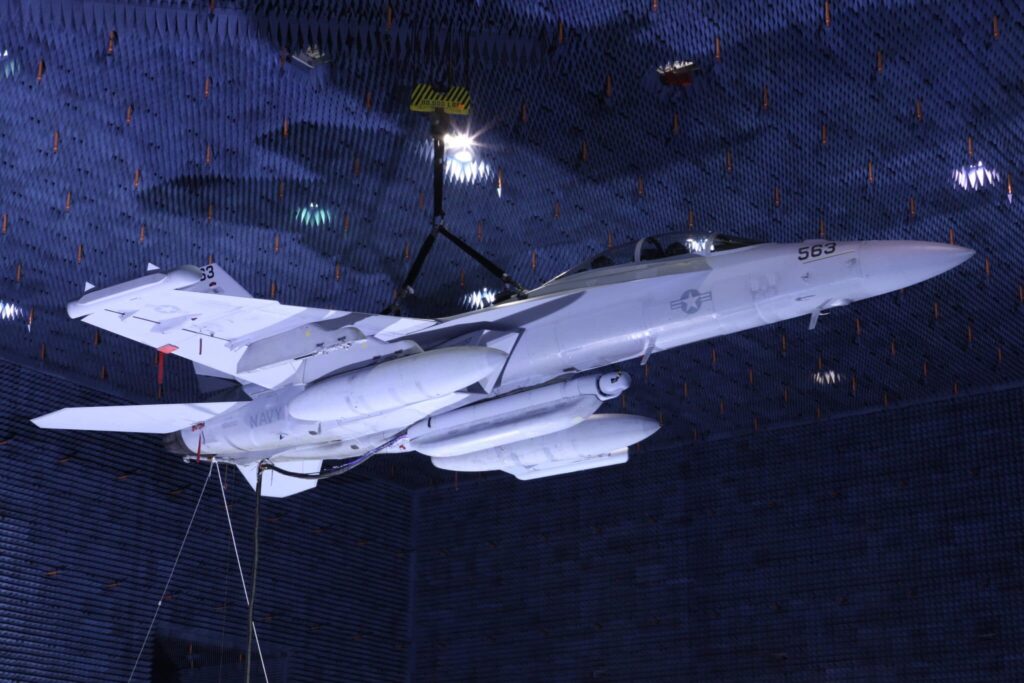
With Boeing’s F/A-18 Super Hornet production line set to sunset in 2027, it also means production will halt on its electronic warfare-centric sibling, the EA-18G Growler. This hasn’t been lost on Boeing, who announced in July of 2024 that they’re exploring the possibility of integrating the Growler’s new Next Generation Jammer Pods into the Eagle II, to convert the broadly capable fighter into an electronic attack platform capable of not just penetrating contested airspace, but increasing the survivability of other 4th and 5th generation aircraft along the way.
In terms of power and payload capacity, the Eagle II certainly has the chops for the job. The U.S. Navy’s EA-18G Growler has nine total hardpoints for weapons, fuel tanks, and jamming equipment with the ability to fly with as much as 17,750 pounds of weapons and gear slung beneath it. The Eagle II has 12 hardpoints that it could potentially be used for these sorts of systems (though it can be expanded to a whopping 23 for other weapons) and is capable of taking to sky with a mind-boggling 29,500 pound of ordnance and gear onboard.
Details are sparse regarding Boeing’s potential plans for the “Growling Eagle,” but it stands to reason that it would be equipped with Raytheon’s three Next Generation Jammer pods, the first of which entered service on the Growler earlier this year. These pods, delineated into low-band, mid-band, and high-band jammers are capable of wreaking havoc on enemy air defenses and other electronic systems and rendering enemy airspace far more survivable for stealth and non-stealth fighters alike.
While the Pentagon did once explore the idea of fielding carrier-variant F-15s, that idea has long since died and a Growling Eagle would instead be an Air Force asset – but as electronic warfare grows increasingly important in modern warfare, the Growling Eagle may have a solid shot at flying its way into service.
Using the F-15EX as a large-weapon missile truck
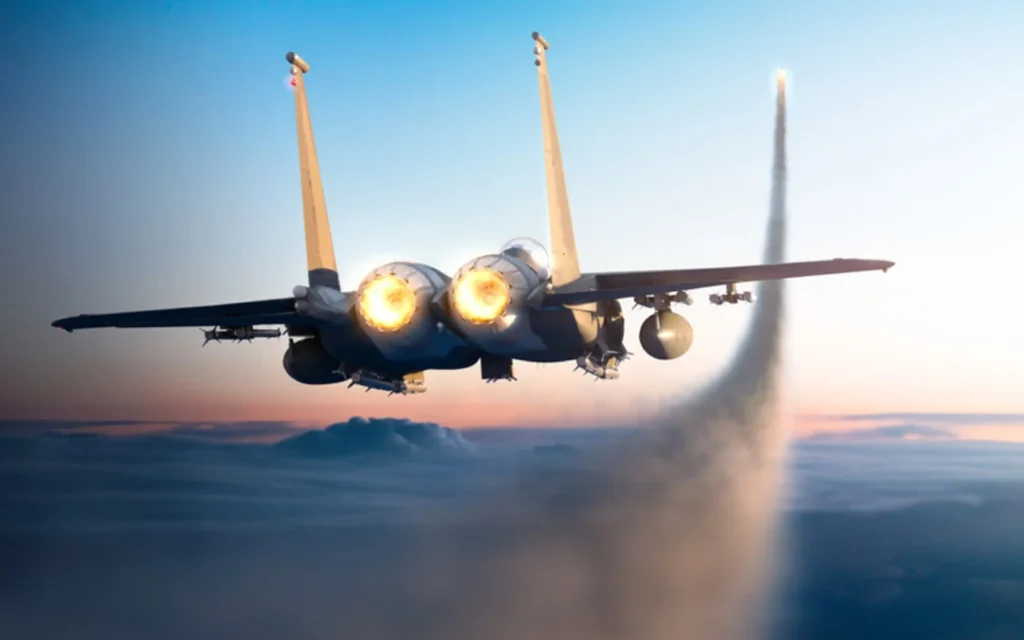
Because stealth fighters have to carry their weapons internally to maintain their low observable profile, they are significantly limited not just in the number, but in the size of weapons they can carry into the fight. As such, the Air Force has already expressed a great deal of interest in using the F-15EX as an oversized missile truck, relaying target data collected by forward-advancing stealth fighters back to the Eagle II for engagement from outside the reach of enemy air defenses.
This could be particularly valuable for larger air-launched hypersonic weapons like the Air Force’s AGM-183 Air-launched Rapid Response Weapon, or ARRW. This weapon (which saw a troubled tested regime but may yet find its way into service) offers an immense range of more than 1,000 miles and the ability to fly and maneuver at speeds reportedly in excess of Mach 7 – but at roughly 22 feet long and 6,600 pounds, these massive weapons would never fit inside the internal weapons bay of an American stealth fighter. To date, ARRW test launches have been conducted from B-52 bombers, but plans are already in place to integrate the system into F-15E Strike Eagles if and when it does enter service.
But the F-15EX’s ability to carry oversized loads could prove highly useful in the air superiority mission as well. In recent months, we’ve gotten a good look at the U.S. Navy’s new AIM-174B – an air-launched variant of the ship-launched SM-6 interceptor that has the potential to engage airborne targets at ranges possibly in excess of 300 miles. This weapon was designed specifically with the Naval Integrated Fire Control-Counter Air (NIFC-CA) architecture in mind, which is effectively a network of battlefield assets that will allow Super Hornets to get target information from forward advancing stealth fighters or powerful ship-based radar arrays and engage them with the AIM-174 even when the Super Hornet itself cannot see the target on its own radar scope.
The F-15EX, with its superior payload capacity, could excel in a similar role for the U.S. Air Force, and in fact, there’s been mention of the aircraft doing precisely that dating all the way back to budget documents in 2022 that referenced Eagle IIs carrying an as-yet-undisclosed very-long-range air-to-air missile. That weapon could potentially be based on the Navy’s AIM-174, which was certainly in development and testing well before being formally acknowledged by the Navy earlier this year, or it could potentially be one of several other missile programs in development under names like the Long Range Engagement Weapon (LREW).
Making the Eagle II into a tactical refueling tanker
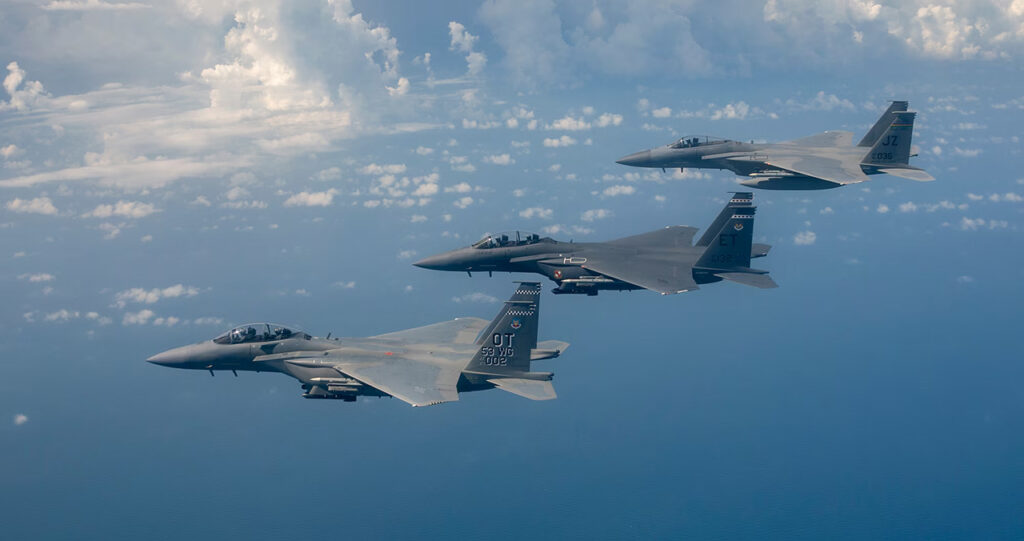
The United States maintains the world’s largest fleets of aerial refueling platforms, enabling air operations all around the globe, but tanker aircraft are extremely vulnerable assets in a high-end fight. As such, the U.S. Air Force and Navy alike have been pursuing a number of ways to distribute tanker duties across a wider variety of more survivable platforms in recent years.
And it was seemingly with this concern in mind that the innovation-focused arm of the Air Force Research Lab (AFWERX) awarded two developmental contracts in late August to develop and field “buddy” tanker pods for the F-15 family of aircraft that could allow platforms like the Eagle II to serve as high-performance refuelers closer to contested airspace than a tanker might venture to fly.
This is not a new concept, of course, as the U.S. Navy has used tactical aircraft for refueling duties for years, and more recently, began testing its new MQ-25 Stingray refueling drone that operates in a similar capacity. These F-15 tanker pods, however, would employ the Air Force’s preferred boom method of fuel transfer, rather than the Navy and Marine Corps’ probe-and-drogue method.
And this is, once again, a place where the Eagle II’s speed, payload capacity, and survivability could make it a boon for American airpower even without trading blows in contested airspace. F-15EXs equipped with buddy tanker pods could even serve as something of a bridge between vulnerable tanker aircraft operating further away from the fight and stealth fighters like the F-35 and F-22 conducting combat operations in contested airspace. When the stealth fighters need a top-up, they could meet Eagle IIs for rapid refueling before heading back into the fight, while the F-15EX then turns and heads away from the fray to meet up with a tanker and refill its stores for the next stealth fighter in need of a pit stop.
Contracts were awarded to Legionnaire International and Leidos subsidiary Dynetics to develop this concept, under the name Small Hybrid Aerial Refueling Kit (SHARK), but it’s likely to be some time before we learn more about when the capability might find its way to service.
Read more from Sandboxx News
- Anduril’s new cruise missile concept could be a boon for American airpower
- The Air Force wants drones on steroids to accompany its future fighters
- The British military’s new elite unit is receiving one of the best rifles in the world.
- New Museum of the Marine Corps galleries engage multiple senses to simulate combat environments
- These are the pistols that America’s generals carry







